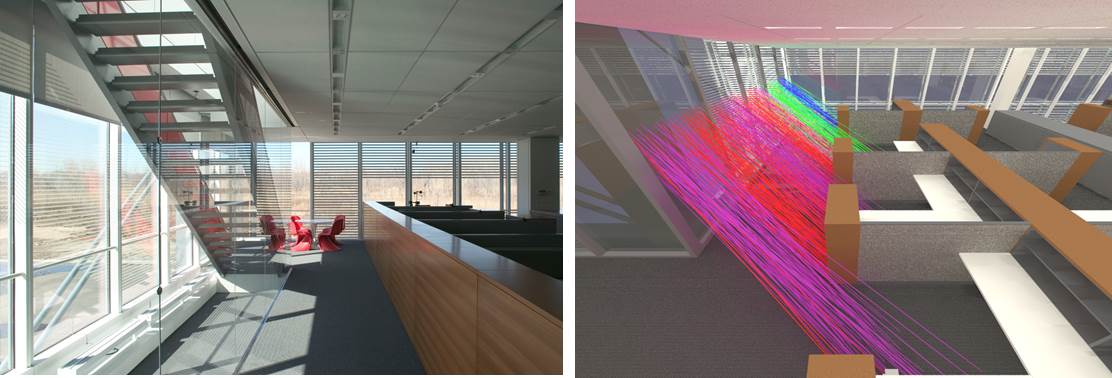Modeling Optically Complex Fenestration Systems
Both solar-optical and thermal factors must be considered when modeling window heat gains. Incident solar radiation on a glazing layer, for example, is transmitted or reflected into the room (solar-optical), while absorbed radiation is conducted or re-radiated into the room (thermal). LBNL researchers have developed simulation tools to determine window heat gains for optically complex fenestration systems (CFS) (e.g., venetian blinds, fabric shades) that scatter radiation in a non-specular manner. The optical side of modeling CFS is accomplished either using EnergyPlus or using Radiance-generated schedules as input into EnergyPlus. In both cases, the thermal modeling is done according to the ISO 15099 standard. Field measurements have been done to validate the modeling approach.

Right: Indoor photo of the New York Times Headquarters daylighting mockup near the stair. Left: Rendering of a similar area. Using bidirectional scattering distribution function (BSDF) data, ray-tracing calculations, and computationally efficient matrix operations, absorbed solar radiation was determined for each time step at each layer of the window system and transmitted solar radiation was determined for each room surface in the furnished zones, including the UFAD floor plenum and furniture gains. The color of the rays indicate which surface (floor or furniture) and which zone (zone near window or core zone) the transmitted solar radiation was assigned to. Image: David Joseph (left); Andrew McNeil (right).



